Choosing Between Chatbots and Live Chat for Your Business
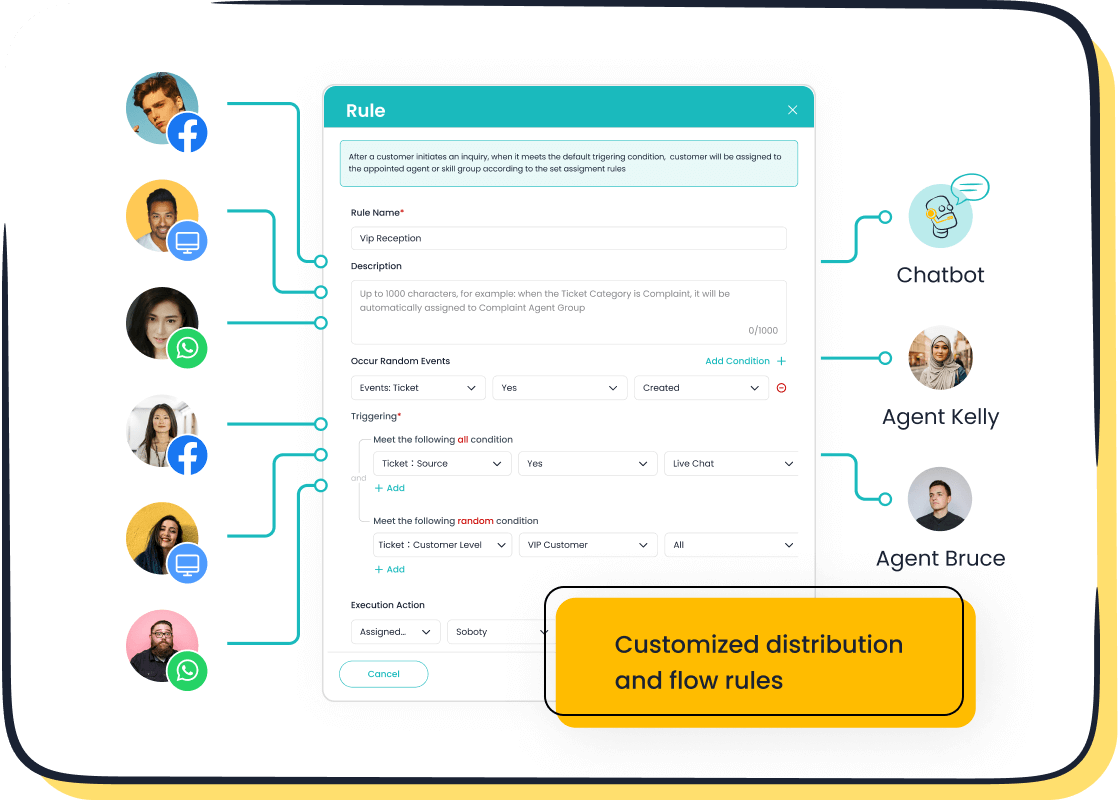
Your choice of customer communication tools can define your business success. Statistics reveal that companies investing in omni-channel experiences have grown from 20% to over 80%. Those with strong customer engagement strategies achieve 10% annual growth and a 25% increase in close rates. On the flip side, one in three customers will leave a brand they love after a single bad experience.
Aligning tools like chatbot vs. live chat with your goals can transform customer interactions. Chatbots offer instant responses, cutting wait times and boosting satisfaction. Live chat enables personalized service, creating stronger connections. Platforms like Sobot combine the strengths of both chatbot vs. live chat, allowing you to optimize efficiency and elevate customer satisfaction.
Chatbot vs. Live Chat: Understanding the Basics
What Are Chatbots
Chatbots are automated programs designed to simulate human conversations. They use technologies like artificial intelligence (AI) and natural language processing (NLP) to understand and respond to customer queries. These bots can operate based on predefined rules or learn from interactions to improve their responses.
Some examples of chatbots include Apple’s contextual assistant, Optimum’s SMS bot for troubleshooting, and Domino’s Pizza’s Facebook Messenger bot that remembers past orders. Chatbots are scalable, available 24/7, and ideal for handling repetitive tasks like answering FAQs or guiding users through simple processes.
What Is Live Chat
Live chat connects customers directly with human agents in real time. It allows businesses to provide personalized support for complex issues that require empathy and context. Unlike chatbots, live chat relies on trained staff to deliver solutions tailored to individual needs.
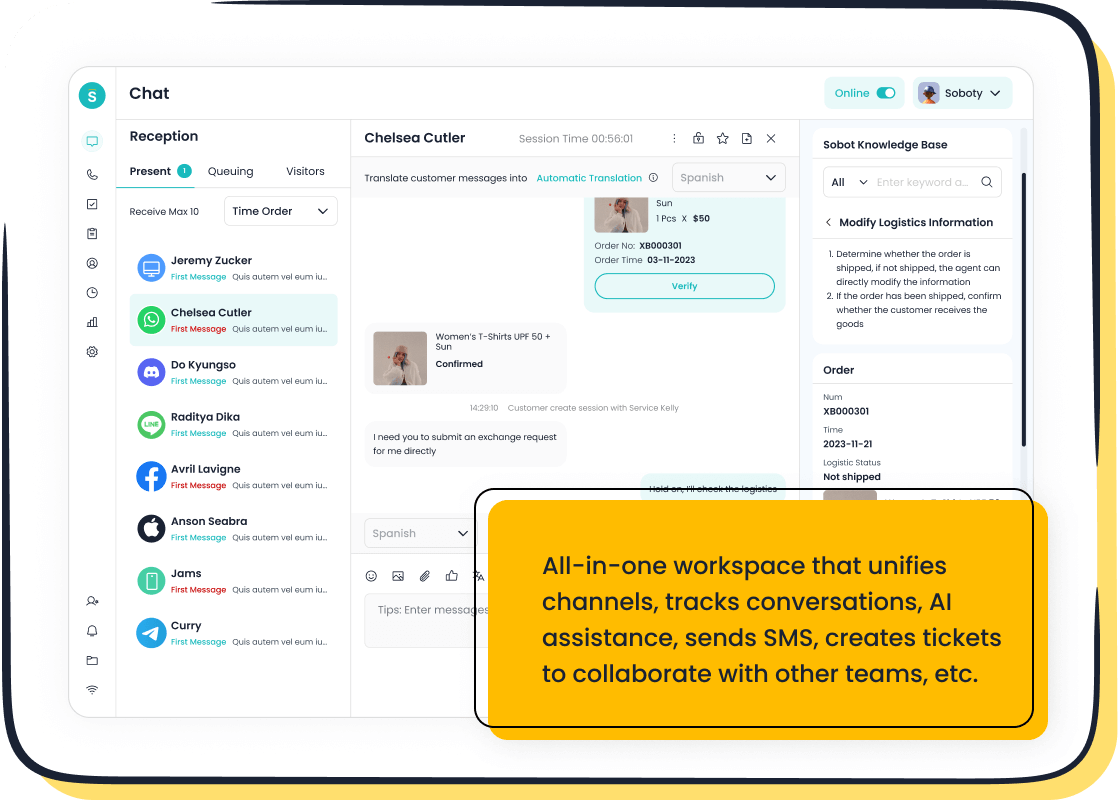
Platforms like Sobot Live Chat enhance this experience by offering omnichannel support, AI-assisted tools, and analytics. These features help agents respond quickly, track customer interactions, and improve service quality. Live chat is particularly effective for resolving complaints, assisting with product setup, and answering detailed questions.
Common Applications in Customer Service
Both chatbots and live chat play vital roles in customer service. Chatbots excel at providing instant responses to common queries, saving businesses over $8 billion annually. They are widely used for tasks like troubleshooting, order tracking, and offering personalized recommendations.
Live chat, on the other hand, shines in scenarios requiring human interaction. It helps build customer loyalty by addressing complaints, guiding users through complex processes, and offering real-time support. According to statistics, 86% of clients prefer interacting with a real person, while 69% are willing to use chatbots for faster issue resolution.
Here’s a comparison of key aspects:
| Aspect | Chatbots | Live Chat |
|---|---|---|
| Response Time | Immediate responses to common queries | Real-time assistance for complex issues |
| Cost-Effectiveness | Lower operational costs | Higher ROI due to immediate customer engagement |
| Accessibility | Available 24/7 for basic inquiries | Limited by agent availability |
| Ease of Use | Scalable and easy to implement | Requires training and staffing |
| Precision | Struggles with complex queries | Better at understanding context and nuances |
| Customer Satisfaction | Quick responses but may lack empathy | Human connection leads to higher satisfaction |
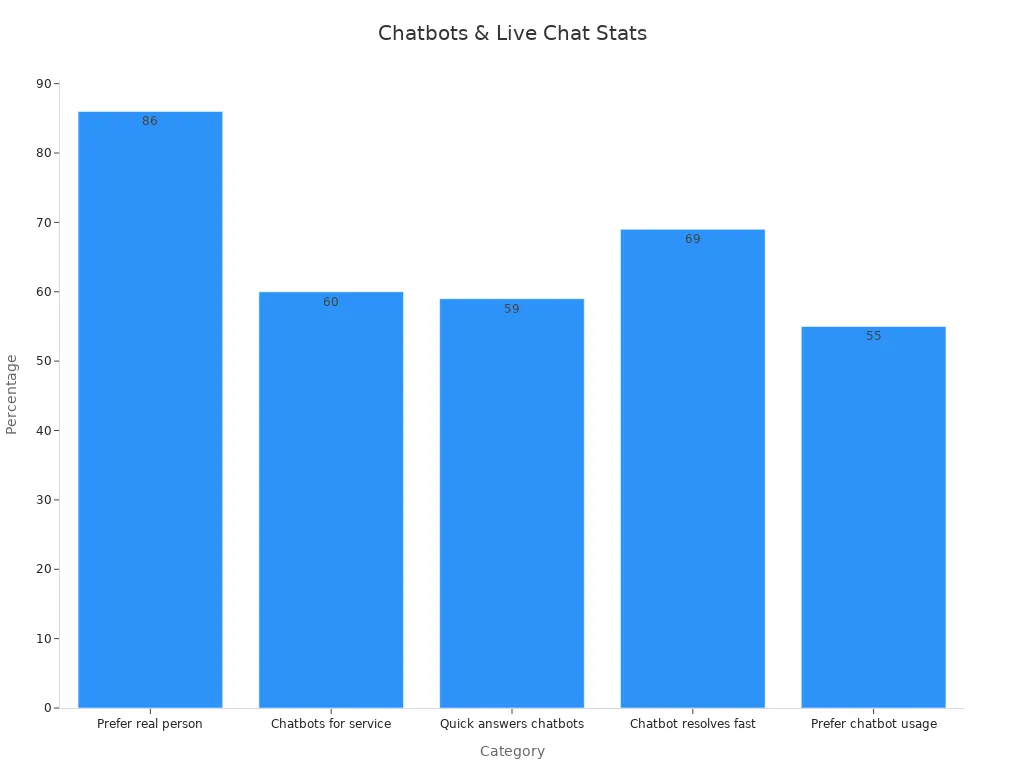
Both tools have unique strengths. Choosing between them depends on your business needs, customer expectations, and the complexity of queries you handle.
Key Differences Between Chatbots and Live Chat
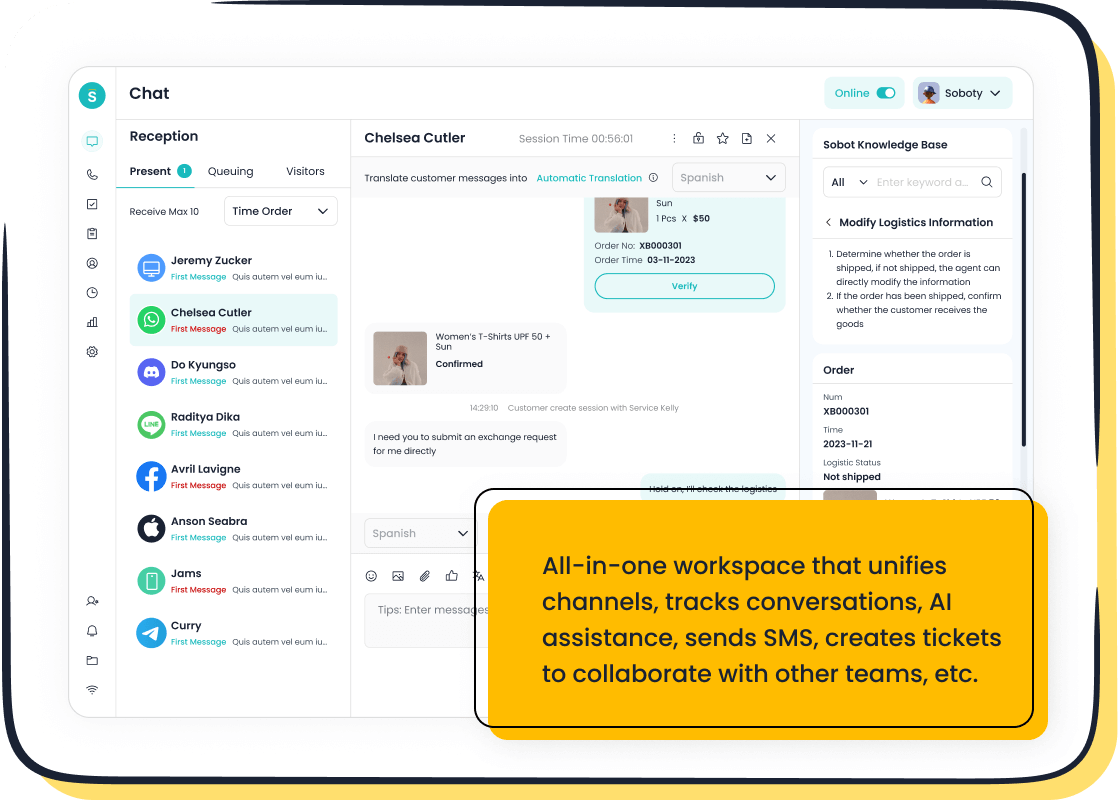
Response Time and Availability
When it comes to response time, chatbots have a clear advantage. They provide instant replies, often within seconds, making them ideal for handling simple queries. Studies show that 69% of customers prefer chatbots for quick responses, especially for straightforward questions. Chatbots operate 24/7, ensuring your customers always receive assistance, even outside business hours. This round-the-clock availability can significantly enhance customer satisfaction, particularly for global businesses with diverse time zones.
In contrast, live chat relies on human agents, which means availability depends on staffing. While live chat offers real-time interaction, response times can vary. Customers may wait anywhere from a few seconds to several minutes, depending on agent availability and query volume. However, live chat excels in providing personalized customer support for complex issues that require empathy and context.
| Statistic | Chatbots | Live Chat |
|---|---|---|
| Response Time | Instant | 7 seconds to 9 minutes |
| Availability | 24/7 | Limited to business hours |
| Preference for Quick Responses | 69% | N/A |
Cost and Scalability
Chatbots are a cost-effective solution for businesses looking to manage high volumes of customer interactions. Cloud-based chatbots, in particular, have lower initial costs and can scale effortlessly to handle increased traffic. They don’t require additional hardware or staffing, making them an excellent choice for growing businesses. On-premise chatbot solutions, while more expensive upfront, offer long-term savings and greater control over sensitive data.
Live chat, on the other hand, involves higher operational costs. You need to hire and train agents, which can be resource-intensive. Scalability is also a challenge, as the number of conversations you can handle depends on the size of your support team. For businesses experiencing seasonal spikes in customer inquiries, this limitation can lead to longer wait times and reduced customer satisfaction.
| Aspect | Chatbots | Live Chat |
|---|---|---|
| Cost | Lower initial and ongoing costs | Higher operational costs |
| Scalability | Handles multiple conversations seamlessly | Limited by the number of available agents |
Personalization and Customer Experience
Chatbots excel at providing instant responses, but they often lack the human touch. They are perfect for addressing FAQs and guiding users through predefined processes. Advanced chatbots, like those powered by AI, can offer multilingual support, making them highly effective for businesses with a global audience. However, they may struggle with nuanced or emotionally charged queries.
Live chat stands out in delivering personalized customer support. Human agents can adapt their tone, language, and approach based on the customer's mood and needs. This level of personalization significantly impacts customer experience, with 80% of users more likely to purchase from companies offering tailored interactions. While live chat may not match the speed of chatbots, it provides the empathy and understanding that many customers value.
Tip: Combining chatbots and live chat can offer the best of both worlds. Use chatbots for instant responses and live chat for complex issues requiring a human touch.
| Feature | Chatbots | Live Chat |
|---|---|---|
| Personalization | Limited | High |
| Language Support | Multilingual | Dependent on agent skills |
| Customer Experience | Quick but less empathetic | Tailored and empathetic |
Accuracy and Problem-Solving Capabilities
When it comes to accuracy and problem-solving, chatbots and live chat excel in different ways. Chatbots provide consistent responses by adhering to predefined scripts. This ensures uniformity in customer service experiences. They also handle inquiries instantly, making them reliable for straightforward tasks like order tracking or FAQs. However, chatbots may struggle with complex queries or unusual phrasing. For example, a chatbot might misinterpret a misspelled word or fail to grasp the context of a nuanced question.
Live chat, on the other hand, shines in handling intricate issues. Human agents can interpret customer intent more accurately, even when faced with unclear language or emotional undertones. This makes live chat ideal for resolving complaints or addressing unique customer needs. For instance, if a customer describes a technical issue in vague terms, a live agent can ask clarifying questions to identify the root cause and provide a tailored solution.
-
- Immediate responses, ensuring 24/7 availability.
- Consistent messaging for uniform service.
-
Live Chat Advantages:
- Superior at solving complex problems requiring human judgment.
- Better at interpreting intent, even with misspellings or unusual phrasing.
By combining chatbots and live chat, you can leverage the strengths of both. Chatbots can handle repetitive tasks, while live chat agents focus on complex issues. Sobot’s AI-powered chatbot and Live Chat solutions exemplify this synergy. For example, OPPO achieved an 83% chatbot resolution rate by using Sobot’s tools, freeing agents to address more challenging queries. This approach not only improves accuracy but also enhances overall customer satisfaction.
Integration with Tools Like Sobot Live Chat
Integrating chatbots with live chat platforms like Sobot Live Chat can transform your customer service operations. This integration allows seamless transitions between automated and human support, ensuring customers receive the right level of assistance at the right time. For instance, a chatbot can handle initial inquiries and escalate complex issues to a live agent when necessary. This reduces response times and improves resolution rates.
Many businesses have already seen remarkable results from such integrations. A healthcare provider improved resolution rates by 35% by streamlining workflows with AI solutions. Similarly, Maruti Suzuki’s AI chatbot engaged over 400,000 users, handling millions of queries and facilitating thousands of bookings. These examples highlight how combining chatbots and live chat can enhance efficiency and customer satisfaction.
Sobot Live Chat takes this integration further by offering omnichannel support and AI-assisted tools. It connects with various platforms like WhatsApp, Facebook, and Instagram, ensuring you can engage customers wherever they are. Additionally, its built-in analytics provide insights to optimize your service strategy. By integrating Sobot’s chatbot and live chat solutions, you can create a unified customer experience that drives loyalty and growth.
Pro Tip: Use Sobot’s customizable widgets and multilingual support to tailor your customer interactions and expand your global reach.
Live Chat vs Chatbot: Pros and Cons
Strengths of Chatbots
Chatbots offer several advantages that make them a valuable tool for customer support. Their 24/7 availability ensures customers receive assistance anytime, minimizing wait times and improving satisfaction. Chatbots excel at handling repetitive tasks, such as answering FAQs or tracking orders, which boosts operational efficiency. They also scale effortlessly to meet fluctuating demand, making them ideal for businesses experiencing seasonal spikes.
Personalized interactions are another strength of chatbots. Advanced AI-powered chatbots analyze user behavior to deliver tailored responses, enhancing engagement. For example, chatbots can recommend products based on browsing history or provide multilingual support for global audiences. According to a survey by Drift, 64% of customers consider round-the-clock service the best feature of chatbots.
| Aspect | Chatbots |
|---|---|
| Customer Experience | Instant responses, 24/7 availability, minimizes wait times. |
| Efficiency and Effectiveness | Handles repetitive inquiries, automates processes, faster response times. |
| Scalability | Easily adapts to increased workloads without additional resources. |
Strengths of Live Chat
Live chat stands out for its ability to provide personalized and empathetic customer service. Human agents can adapt their tone and approach based on the customer’s mood, fostering trust and loyalty. This makes live chat particularly effective for resolving complex issues or addressing sensitive situations. Customers value the human touch, with 86% preferring interactions with live agents over automated systems.
Live chat also enhances problem-solving capabilities. Agents can ask clarifying questions, interpret vague descriptions, and offer tailored solutions. For example, H&M’s live chat system provides real-time sizing assistance and personalized product recommendations, improving customer satisfaction in e-commerce.
| Aspect | Live Chat |
|---|---|
| Customer Experience | Direct interaction with human agents, fosters empathy and understanding. |
| Efficiency and Effectiveness | Resolves complex issues, enhances problem-solving effectiveness. |
| Integration | Offers integration with CRM, help desk services for centralized management. |
Limitations of Each Option
While chatbots excel in efficiency, they struggle with complex inquiries. Their inability to think critically or interpret nuanced language can frustrate customers. Automated responses may feel impersonal, impacting satisfaction. Additionally, some customers distrust chatbots, perceiving them as barriers to human interaction.
Live chat, on the other hand, faces challenges in scalability and cost. Hiring and training agents require significant resources, and availability depends on staffing. During peak times, customers may experience longer wait times, reducing satisfaction. Despite these limitations, combining chatbots and live chat can address these gaps effectively.
| Limitation | Description |
|---|---|
| Inability to handle complex issues | Chatbots struggle with complex customer issues due to knowledge base shortcomings, inability to think critically, and limited creativity. |
| Absence of human connection | Customers prefer human interaction, and the lack of it can hinder relationship building and lead to negative experiences. |
| Scalability Challenges | Live chat depends on agent availability, making it harder to scale during high-demand periods. |
How to Choose Between Chatbots and Live Chat for Your Business
Assessing Business Size and Budget
Your business size and budget play a crucial role in deciding between chatbots and live chat. Smaller businesses with limited resources often benefit from chatbots due to their cost-effectiveness. Rule-based chatbots, for instance, operate on simple if-then logic, making them affordable and quick to deploy. They work well for structured processes like answering FAQs or providing order updates. On the other hand, AI-powered chatbots, which use machine learning and natural language processing, can handle more complex conversations but may require a higher initial investment.
For larger businesses or enterprises, hybrid chatbots offer a balanced approach. These combine rule-based and AI features, providing both structured and flexible interactions. They allow you to scale operations without significantly increasing costs. Live chat, however, involves higher operational expenses. You need to hire and train agents, which can strain budgets, especially during peak seasons. While live chat offers personalized customer support, it may not be the most budget-friendly option for businesses with high query volumes.
Tip: If your budget allows, consider integrating both chatbots and live chat. Platforms like Sobot enable seamless transitions between automated and human support, optimizing costs while enhancing customer satisfaction.
Understanding Customer Expectations
Understanding what your customers expect is key to making the right choice. Research shows that 75% of consumers prefer speaking to a real human for customer support. This highlights the importance of live chat in building trust and loyalty. Customers often turn to live chat for complex issues that require empathy and nuanced understanding. For example, a customer facing a technical problem may feel more reassured when interacting with a knowledgeable agent.
However, chatbots excel in meeting expectations for speed and availability. Many customers appreciate instant responses, especially for straightforward queries like order tracking or store hours. Automation ensures consistency, which is vital for maintaining service quality across high volumes of interactions. While chatbots enhance efficiency, they may fall short in delivering the human connection that some customers value.
Note: To meet diverse expectations, you can use chatbots for quick resolutions and live chat for more intricate issues. Sobot’s omnichannel solutions make this hybrid approach seamless, ensuring your customers receive the right level of support at the right time.
Evaluating Query Volume and Complexity
The volume and complexity of customer queries should guide your decision. Chatbots efficiently manage high volumes of standard inquiries, deflecting up to 60% of incoming support queries. This allows your human agents to focus on more complex issues. For example, a chatbot can handle repetitive tasks like resetting passwords or providing shipping updates, freeing up live chat agents for detailed troubleshooting or complaint resolution.
Live chat shines when dealing with intricate or emotionally charged queries. Human agents can interpret vague descriptions, ask clarifying questions, and provide tailored solutions. For instance, if a customer describes a product malfunction in unclear terms, a live agent can diagnose the issue and offer a personalized resolution. While chatbots struggle with such scenarios, live chat ensures a higher level of accuracy and customer satisfaction.
Pro Tip: Analyze your query data to determine the right mix of chatbots and live chat. If most of your inquiries are simple, prioritize chatbots. For industries like financial services or healthcare, where queries are often complex, live chat becomes indispensable.
Industry-Specific Scenarios
Different industries have unique customer service needs. Choosing between chatbots and live chat depends on the challenges and goals of your sector. Understanding these scenarios helps you make informed decisions.
Healthcare
In healthcare, chatbots play a vital role in improving patient care. They provide medication reminders, answer common health questions, and facilitate discussions on sensitive topics. For example, breast cancer patients benefit from chatbots that help them manage treatment schedules and reduce stress. Physicians also see the potential of chatbots in enhancing nutrition and treatment adherence. Over half of surveyed doctors believe chatbots improve access to care and help patients manage their health better.
Live chat complements chatbots by offering personalized support for complex medical inquiries. Patients often prefer speaking to a human when discussing symptoms or treatment options. Live chat agents can provide empathy and detailed explanations, ensuring patients feel understood and supported. Combining chatbots and live chat creates a balanced approach, addressing both routine and intricate healthcare needs.
Financial Services
Financial institutions increasingly rely on chatbots to streamline customer interactions. Chatbots handle tasks like checking account balances, tracking transactions, and answering FAQs. In 2022, 37% of the U.S. population interacted with a bank's chatbot, highlighting its growing popularity. Chatbots offer a cost-effective solution for banks, reducing the need for large customer service teams while maintaining efficiency.
Live chat, however, excels in situations requiring human judgment. Customers often seek live agents for issues like loan applications or fraud resolution. These scenarios demand a deeper understanding of context and emotional intelligence, which live chat provides. By integrating chatbots and live chat, financial institutions can offer quick responses for routine inquiries while ensuring personalized support for complex matters.
Retail and E-Commerce
In retail, chatbots enhance the shopping experience by providing instant product recommendations and answering questions about shipping or returns. Advanced chatbots analyze browsing history to suggest items tailored to customer preferences. This personalization boosts engagement and increases sales. Chatbots also handle high volumes of inquiries during peak shopping seasons, ensuring customers receive timely assistance.
Live chat adds value by addressing detailed questions about products or services. For example, a customer may need help choosing the right size or understanding warranty terms. Live agents can offer tailored advice, building trust and loyalty. Retailers benefit from combining chatbots and live chat, creating a seamless customer journey from browsing to purchase.
Gaming
The gaming industry often faces high volumes of player inquiries, especially during new releases or updates. Chatbots efficiently manage repetitive queries like account recovery or troubleshooting common issues. They provide instant responses, ensuring players can quickly return to their games.
Live chat, however, is essential for resolving complex problems. Players experiencing technical glitches or billing issues often prefer speaking to a live agent. Human support ensures accurate solutions and fosters a positive gaming experience. By integrating chatbots and live chat, gaming companies can balance efficiency with personalized service, keeping players satisfied and engaged.
Education
Educational institutions use chatbots to streamline administrative tasks. Chatbots answer questions about enrollment, course schedules, and tuition fees, reducing the workload on staff. They also provide 24/7 support, ensuring students and parents receive assistance anytime.
Live chat enhances this experience by addressing more detailed inquiries. For instance, a student may need help choosing courses or understanding graduation requirements. Live agents offer personalized guidance, ensuring students feel supported throughout their academic journey. Combining chatbots and live chat creates a comprehensive support system for educational institutions.
Tip: Evaluate your industry’s specific needs to determine the right mix of chatbots and live chat. Platforms like Sobot offer solutions tailored to diverse sectors, ensuring you deliver efficient and personalized customer service.
Combining Chatbots and Live Chat for Optimal Results
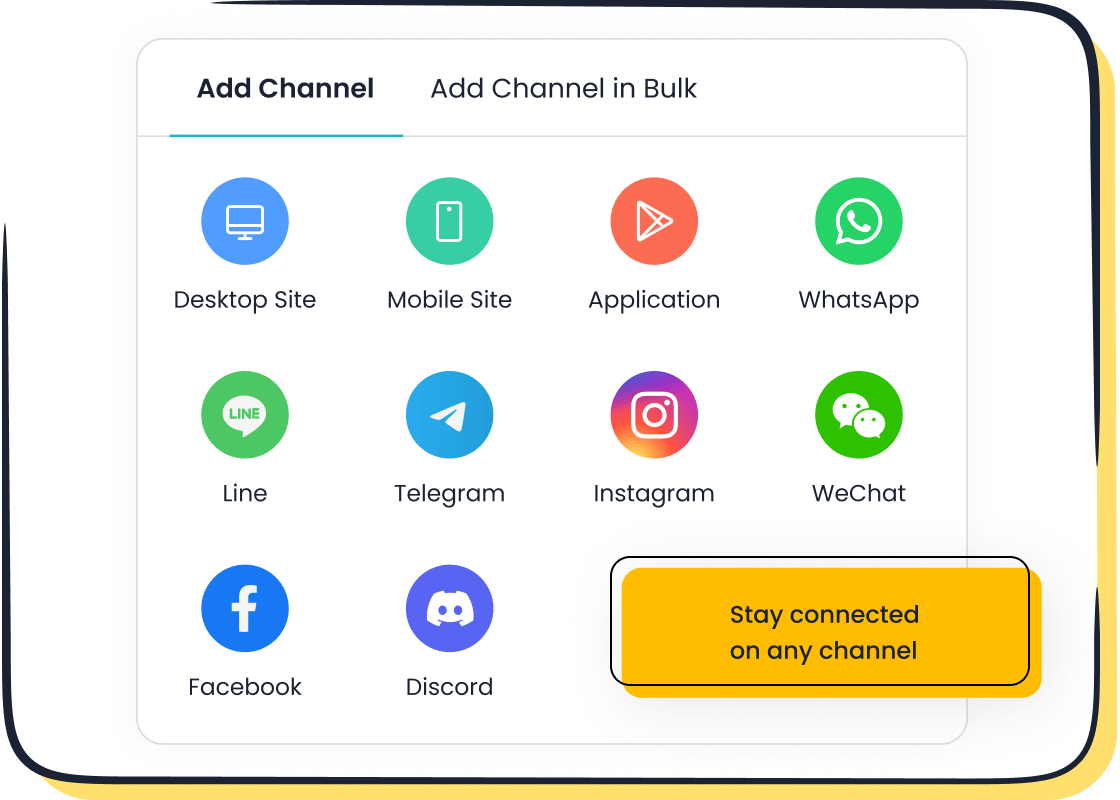
Benefits of a Hybrid Approach
Combining chatbots and live chat creates a powerful hybrid communication strategy that enhances customer service. Chatbots handle routine tasks like answering FAQs or tracking orders, while live chat agents focus on complex issues requiring empathy and human judgment. This approach improves efficiency and customer satisfaction.
For example, Sephora uses hybrid chatbots to engage customers on social media, blending automated responses with human interaction for personalized experiences. Studies show that hybrid models save businesses over $8 billion annually by automating repetitive tasks. Additionally, 57% of customers prefer when chatbots escalate complex queries to human agents, ensuring appropriate support.
| Benefit | Description |
|---|---|
| Enhanced Customer Engagement | Hybrid chatbots combine automated responses with human interaction, leading to more personalized experiences. |
| Cost Efficiency | Chatbots save businesses significant costs by automating routine tasks. |
| Human Handover | Hybrid chatbots transfer conversations to human agents for complex issues, ensuring proper support. |
How Sobot Live Chat and Chatbots Work Together
Sobot Live Chat and chatbots integrate seamlessly to deliver an all-in-one customer service experience. Chatbots handle initial inquiries, providing instant responses and freeing agents to focus on complex problems. When necessary, chatbots escalate conversations to live chat agents, ensuring customers receive the right level of support.
Sobot’s platform enhances efficiency through automation and AI. It reduces response times, streamlines problem-solving, and boosts conversion rates by analyzing shopper behavior. For example, chatbots automatically answer pre-sales questions, while live chat agents manage ticket processing and provide personalized consultations. The unified workspace consolidates conversations across channels, enabling rapid issue resolution.
| Feature | Description |
|---|---|
| Improve Efficiency | Automation and AI reduce response times and enhance service grading, maximizing productivity. |
| Streamline Problem-solving | Involves various roles while agents manage ticket processing. |
| Pre-sales Consultation | Chatbots automatically answer queries, transferring complex issues to agents when necessary. |
| Activity Notice | Facilitates team collaboration and real-time updates for rapid issue resolution. |
| All-in-One Experience | Manages conversations across channels, resolving issues quickly with AI chatbots. |
| Boost Conversion | Analyzes shopper behavior to engage them effectively and enhance loyalty. |
Real-World Examples of Hybrid Models
Hybrid models demonstrate the effectiveness of combining chatbots and live chat. Omni-channel support empowers customers to engage with brands on their terms, enhancing convenience and accessibility. Personalized experiences ensure consistent service across various channels, fostering trust and loyalty.
- Microsoft: Uses digital tools like Teams and SharePoint to maintain consistent communication across global teams.
- Spotify: Implements a "Work from Anywhere" program, allowing employees to choose their work locations while maintaining engagement through clear communication guidelines.
Sobot’s solutions exemplify these benefits. For instance, OPPO achieved an 83% chatbot resolution rate by integrating Sobot’s chatbot and live chat tools. This hybrid approach reduced agent workload and improved customer satisfaction, showcasing the potential of combining automation with human expertise.
Choosing between chatbots and live chat depends on your business goals and customer expectations. Chatbots offer instant, 24/7 responses and scalability, while live chat provides empathy and tailored solutions. Here's a quick comparison:
| Feature | Live Chat | Chatbots |
|---|---|---|
| Response Time | May involve waiting for an agent | Provides instant responses 24/7 |
| Availability | Typically available during business hours | Operates around the clock |
| Personalization | Offers empathy and tailored responses | Can provide relevant responses but lacks full human touch |
To maximize efficiency and satisfaction, consider hybrid solutions like Sobot Live Chat. This approach combines automation with human expertise, ensuring your customers receive the best of both worlds.
FAQ
What is the main difference between chatbots and live chat?
Chatbots provide instant, automated responses to common questions, while live chat connects you with human agents for personalized support. Chatbots excel at handling repetitive tasks, and live chat is better for complex or emotionally sensitive issues.
Can chatbots and live chat work together?
Yes! Combining both creates a hybrid approach. Chatbots handle simple queries, and live chat agents focus on complex problems. Sobot’s platform integrates both seamlessly, ensuring smooth transitions and efficient customer service.
How do I decide which option is better for my business?
Evaluate your needs. Use chatbots for high query volumes and simple tasks. Choose live chat for personalized support. A hybrid solution, like Sobot’s, offers the best of both worlds by balancing automation and human interaction.
Are chatbots cost-effective for small businesses?
Absolutely! Chatbots reduce operational costs by automating repetitive tasks. They scale easily without requiring additional staff. Sobot’s AI-powered chatbots provide affordable solutions tailored to small business needs.
Does Sobot Live Chat support multiple communication channels?
Yes, Sobot Live Chat supports websites, apps, and platforms like WhatsApp, Facebook, and Instagram. Its omnichannel capabilities ensure you can engage customers wherever they are, enhancing accessibility and satisfaction.
See Also
Essential Tips for Selecting Top Chatbot Software
Best Live Chat Solutions for Small Businesses This Year
Selecting the Right Live Chat for Retail Businesses
